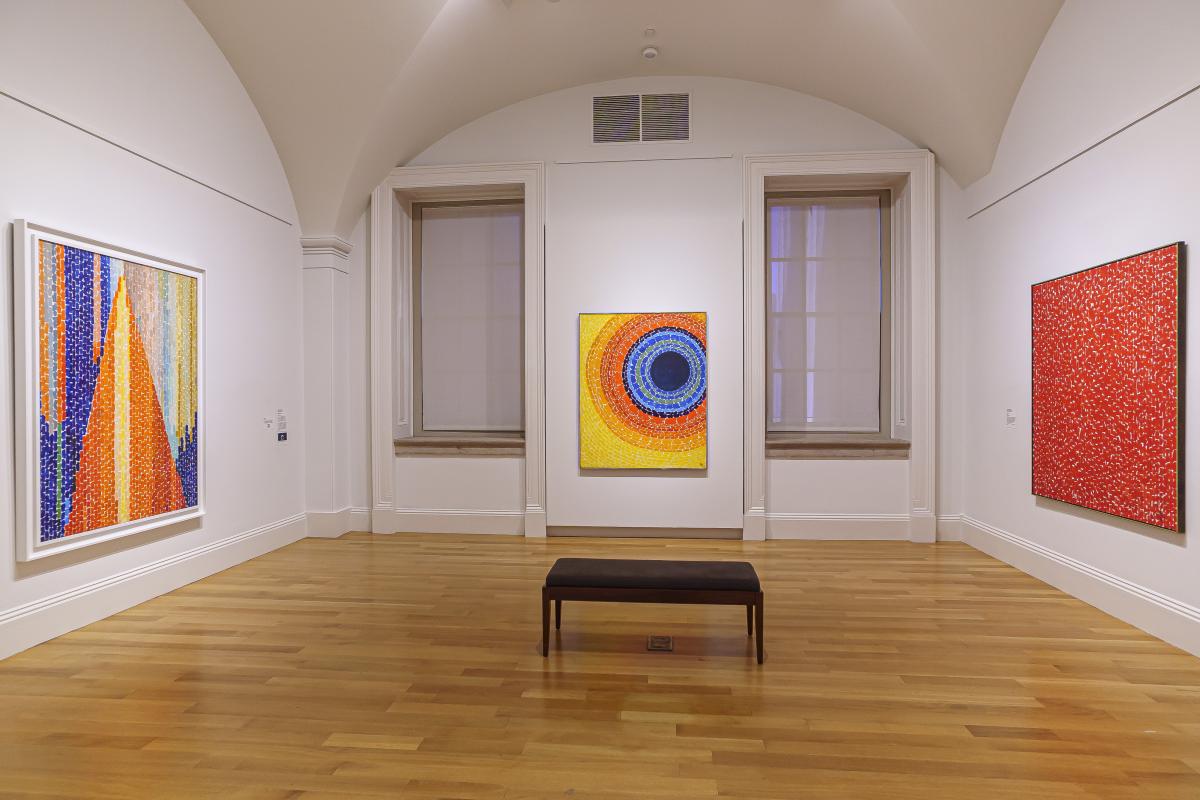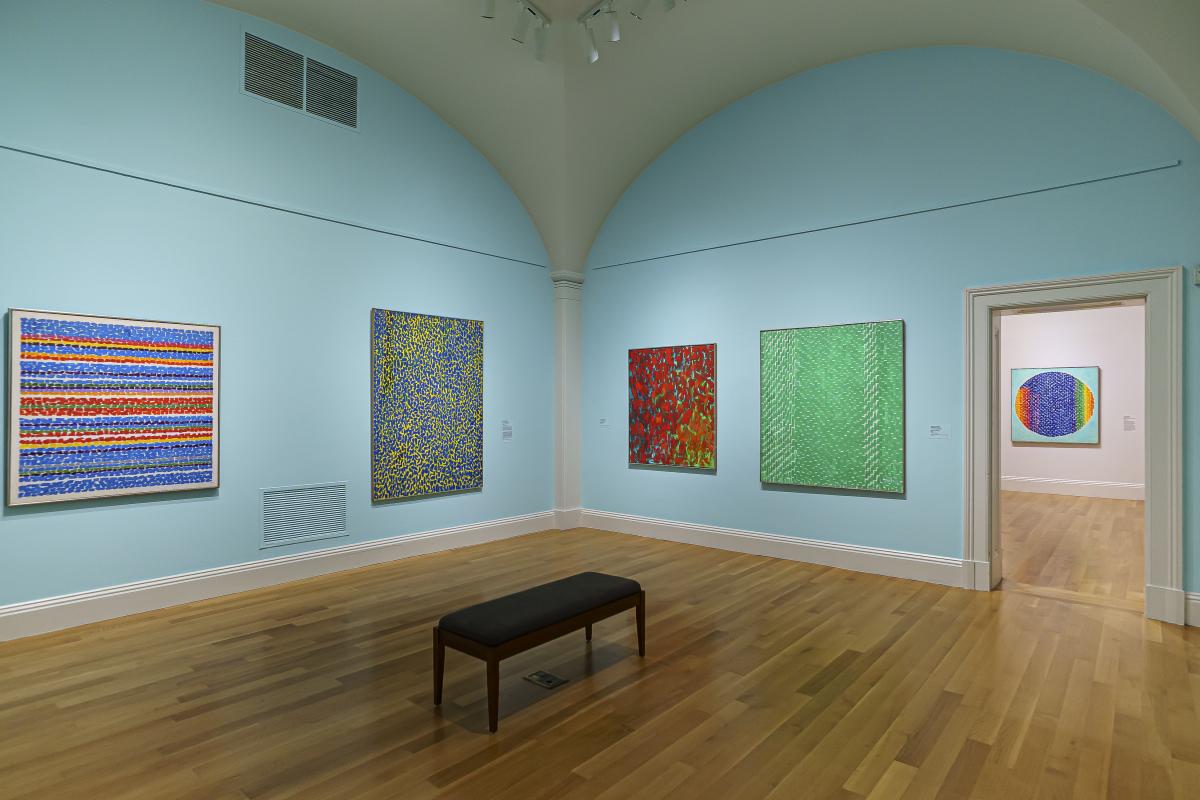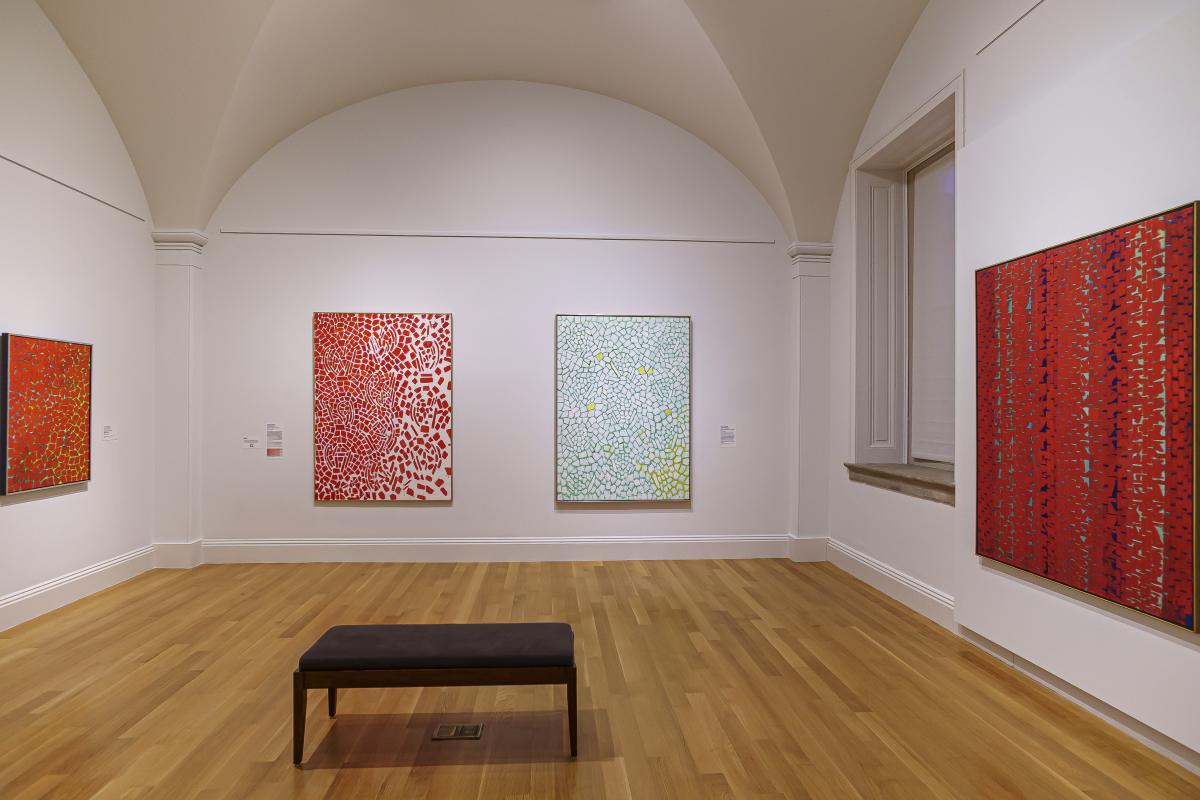
Walking through the galleries of Composing Color: Paintings by Alma Thomas, one can’t help but think of Louis Armstrong’s iconic song “What a Wonderful World.” The visual and performing arts legends both evoke joy and the simplicity and beauty of nature.
SAAM is proud to be the home of the largest public collection of works by Alma Thomas in the world. The first artwork to enter the museum's collection in 1970 was Light Blue Nursery; later, about a dozen pieces were either bought or given to the museum over the course of Thomas's lifetime. She also donated thirteen of her paintings to SAAM after her death.
Thomas had deep personal ties to Washington, DC. She was the first graduate from Howard University with a degree in fine art and then taught in the DC public schools for more than thirty years.
Her distinct style, characterized by the dazzling interplay of pattern and hue really developed during the last fifteen years of Thomas’s life—when she could dedicate the bulk of her time to painting after retiring as a schoolteacher and really come into her full blossom as a painter.
SAAM’s Curator of Twentieth-century Art, Melissa Ho, discusses Thomas’s deceptively complex method of painting:
For visitors who might be unfamiliar with Thomas’s dazzling pieces, Ho suggests to first “just look around each room and look at the paintings in relation to each other, and pick one that speaks to you, and then go and look at it more closely.”
Known for her love of living things, Thomas focuses on the flux, movement, and changeability with a deep level of attentiveness to the details. As Ho notes, Thomas “was an artist who truly believed in the recuperative power of beauty and that beauty is not this trivial thing, but it's something that gets to the essence of being alive and gets to the essence of our spiritual and emotional well-being.”
It is our hope that visitors will enjoy seeing the world through Alma Thomas’s eyes and lose themselves in the works on display. Perhaps you will be transported back to the magic of the Apollo missions, feel the seasons change in different works, or see musical notes lift off the canvas-what a wonderful world, indeed!






















